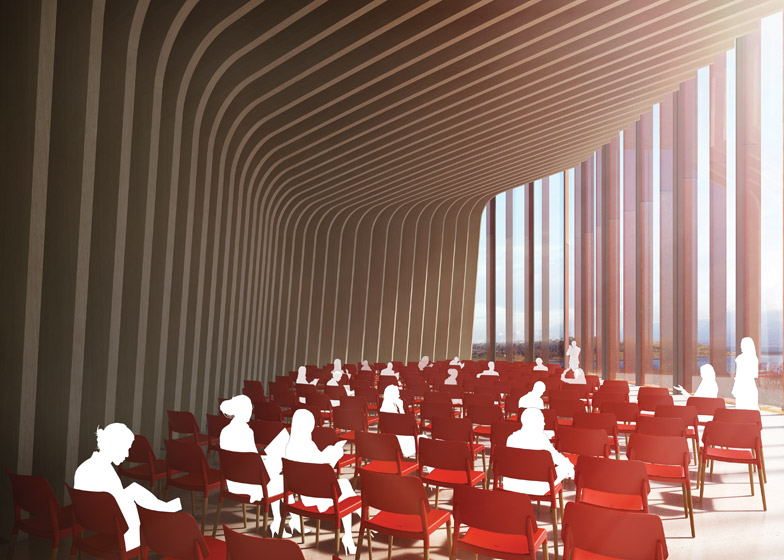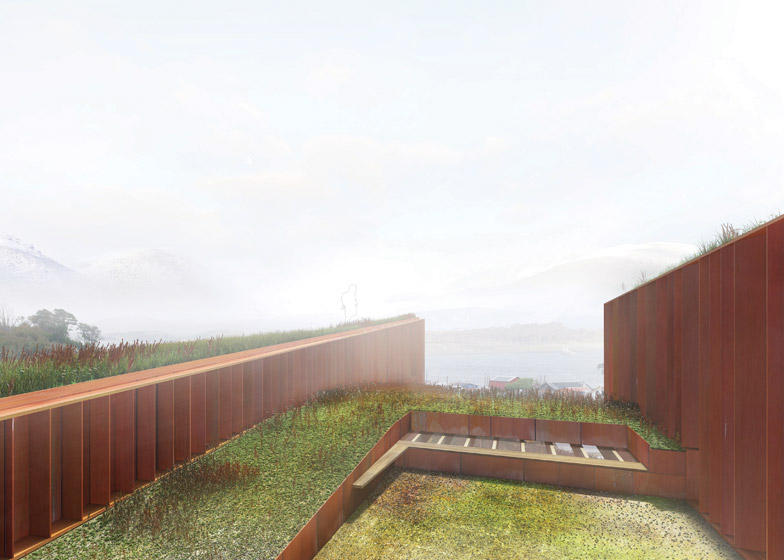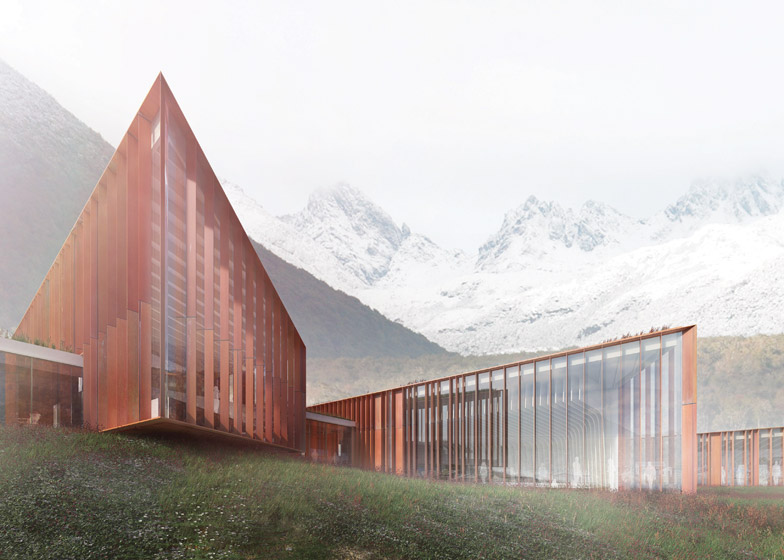Chile’s Regional Government has chosen New York-based Ennead Architects and local architects Cristian Sanhuerza and Cristian Ostertag to design a research center near Cape Horn, the southernmost headland of the Tierra del Fuego archipelago of southern Chile.
The purpose of the Cape Horn Sub-Antarctic Research Center will be to promote study and ecological tourism in this ecologically diverse, albeit remote and sparsely populated, region, which includes a temperate rainforest. “It’s about as far south as you can get without going to Antarctica,” says Richard Olcott, a Principal at Ennead, reports Dezeen.
The site where the research center will be built is within the UNESCO Cape Horn Biosphere Reserve in Puerto Williams.
The research facility is a collaborative venture among the University of Magallanes, the Institute of Ecology and Biodiversity, the Omoro Foundation in Chile, and the University of North Texas. The center will house the Biocultural Research and Conservation Program led by Dr. Ricardo Rozzi, a native Chilean who is a professor at North Texas.

Ennead’s recent commercial projects include the Natural History Museum in Salt Lake City, the Standard Hotel near New York City’s High Line, and the renovation and expansion of Yale’s Art Gallery.
The research center’s exterior will be constructed with maintenance-free Corten steel that forms a self-sealing layer of rust around the structure. The interior’s auditorium will be wrapped in wood, which Olcott suggests would be a bit like the inside of a boat.
Ennead says there will be three programs at the center: education, sustainable tourism, and subantarctic transdisciplinary research, each with its own pavilion. The center will also include a lecture hall and café, exhibition space, and apartments for visiting researchers.
The project should be completed by 2017.

Related Stories
| Dec 17, 2010
Alaskan village school gets a new home
Ayagina’ar Elitnaurvik, a new K-12 school serving the Lower Kuskikwim School District, is now open in Kongiganak, a remote Alaskan village of less than 400 residents. The 34,000-sf, 12-classroom facility replaces one that was threatened by river erosion.
| Dec 17, 2010
New engineering building goes for net-zero energy
A new $90 million, 250,000-sf classroom and laboratory facility with a 450-seat auditorium for the College of Electrical and Computer Engineering at the University of Illinois at Urbana/Champaign is aiming for LEED Platinum.
| Dec 17, 2010
How to Win More University Projects
University architects representing four prominent institutions of higher learning tell how your firm can get the inside track on major projects.
| Dec 6, 2010
Honeywell survey
Rising energy costs and a tough economic climate have forced the nation’s school districts to defer facility maintenance and delay construction projects, but they have also encouraged districts to pursue green initiatives, according to Honeywell’s second annual “School Energy and Environment Survey.”
| Nov 29, 2010
New Design Concepts for Elementary and Secondary Schools
Hard hit by the economy, new construction in the K-12 sector has slowed considerably over the past year. Yet innovation has continued, along with renovations and expansions. Today, Building Teams are showing a keener focus on sustainable design, as well as ways to improve indoor environmental quality (IEQ), daylighting, and low-maintenance finishes such as flooring.
| Nov 23, 2010
Honeywell's School Energy and Environment Survey: 68% of districts delayed or eliminated improvements because of economy
Results of Honeywell's second annual “School Energy and Environment Survey” reveal that almost 90% of school leaders see a direct link between the quality and performance of school facilities, and student achievement. However, districts face several obstacles when it comes to keeping their buildings up to date and well maintained. For example, 68% of school districts have either delayed or eliminated building improvements in response to the economic downturn.
| Nov 9, 2010
Just how green is that college campus?
The College Sustainability Report Card 2011 evaluated colleges and universities in the U.S. and Canada with the 300 largest endowments—plus 22 others that asked to be included in the GreenReportCard.org study—on nine categories, including climate change, energy use, green building, and investment priorities. More than half (56%) earned a B or better, but 6% got a D. Can you guess which is the greenest of these: UC San Diego, Dickinson College, University of Calgary, and Dartmouth? Hint: The Red Devil has turned green.
| Nov 3, 2010
First of three green labs opens at Iowa State University
Designed by ZGF Architects, in association with OPN Architects, the Biorenewable Research Laboratory on the Ames campus of Iowa State University is the first of three projects completed as part of the school’s Biorenewables Complex. The 71,800-sf LEED Gold project is one of three wings that will make up the 210,000-sf complex.
| Nov 3, 2010
Park’s green education center a lesson in sustainability
The new Cantigny Outdoor Education Center, located within the 500-acre Cantigny Park in Wheaton, Ill., earned LEED Silver. Designed by DLA Architects, the 3,100-sf multipurpose center will serve patrons of the park’s golf courses, museums, and display garden, one of the largest such gardens in the Midwest.
| Nov 3, 2010
Seattle University’s expanded library trying for LEED Gold
Pfeiffer Partners Architects, in collaboration with Mithun Architects, programmed, planned, and designed the $55 million renovation and expansion of Lemieux Library and McGoldrick Learning Commons at Seattle University. The LEED-Gold-designed facility’s green features include daylighting, sustainable and recycled materials, and a rain garden.














